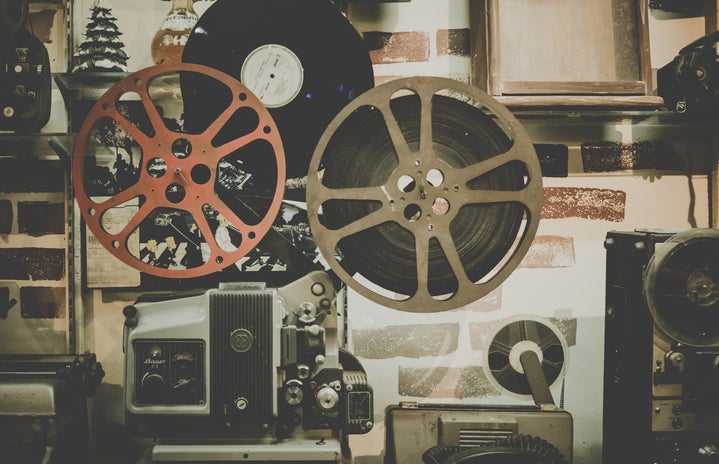Trigger Warning: This article discusses the plots of several television shows which include themes of sexual assault and homophobia.
Nowadays, most conversations regarding the entertainment industry revolve around representation. And rightfully so — taking a look at the nominated artists and creators at any major award show like The Oscars reminds us that there is still a lot of work to be done when it comes to achieving equity in influential spaces.
A quote from IBM Vice President Claudia Brind-Wooley feels especially applicable here. She said, “Inclusivity means not ‘just we’re allowed to be there,’ but we are valued.” Indeed, representation isn’t simply a matter of making individuals of varying identities visible for a quick shot (see: Star Wars: The Rise of Skywalker’s ridiculous claims of LGBTQ+ representation with a several-second-long kiss shared between two women in the background of a busy scene). The quality of that representation is also deserving of some appraisal, and the queer community has had its fair share of questionable moments in popular culture.
Recent years have seen a number of LGBTQ+ films hit the mainstream. From the revered Portrait of a Lady on Fire and Moonlight to the somewhat more critiqued Love, Simon and Happiest Season, a heavy emphasis on queer tragedy and coming out narratives have served as foundational themes for the developing genre.
Still, any push toward diversity is not without its setbacks, and it seems queer movies often can’t help but rely on stereotypes. Many might sound familiar: the “Gay Best Friend,” the “Depraved Homosexual,” and the infamous “Bury Your Gays” trope that preys especially on queer women and leads many LGBTQ+ characters to an unnecessarily early grave.
The stereotype I find perhaps the most troubling is referred to as the “armoured closet gay.” This character might be a stereotypical “jock,” and they likely emphasize their strength and traditional gender performance (usually masculinity) as often as possible. They tend to be vocally homophobic, and sometimes even resort to violence in their interactions with queer individuals. However, this character is themselves closeted — so ashamed of their queer identity that they terrorize others who live that same identity freely and openly. Shakespeare might say these characters simply protest too much, but I’d argue this trope is a serious issue rooted in some very troubling symptoms of the society we live in.
I could list examples of this motif all day long, and some are certainly better than others. The Perks of Being a Wallflower’s Patrick and Brad are certainly among the best. Brad’s status as a football player living in a homophobic household does well to address the idea that not everyone has the same circumstances when coming out. Examples that were less expertly handled include Pretty Little Liars characters Paige McCullers and Emily Fields starting a relationship after the former attempted to drown the latter in a high school swimming pool, and Glee’s Dave Karofsky, an athlete and lifelong bully who specifically targeted Kurt Hummel, the only out gay student at the time, because he had a crush on him. Even Shameless and Sex Education, personal favorites of mine, found themselves at one time or another lost in the same old story when outwardly homophobic characters like Mickey Milkovich and Adam Groff revealed their sexualities.
The story I want to address specifically today is that of Montgomery de la Cruz: 13 Reason Why’s very own armoured, closeted gay. Given the show’s abysmal approach to any and all sensitive topics, I can’t say their mishandling of this character comes as much of a surprise. Montgomery starts the show as a jock and crony to the primary antagonist Bryce Walker. All the while, Montgomery aids and protects his friends in their terrible acts, and also actively participates by getting into physical altercations and spreading harmful rumors. In the second season, a horrific and highly criticized scene shows Montgomery sexually assaulting a male classmate. It was an inexcusable act that seemed to serve as, albeit unnecessary, proof of Montgomery’s deep and hateful prejudices.
Then: Season Three. Through a number of flashbacks, viewers learn that Montgomery slept with a guy (Winston Williams) at a party. Immediately after, when Winston attempts to say good-bye, Montgomery launches homophobic slurs to regain his sense of masculinity and separate himself from the act he just committed. The two have a complicated relationship, but do reunite on several occasions. Through a confusing series of events that seem a benchmark of the program’s convoluted plot, Montgomery ends up wrongfully accused of the death of Bryce Walker. Soon after he is placed in prison, Montgomery is killed (thus, another gay buried).
All of this is not to say that stories like these are not worth being told. Interalized homophobia, or the process by which queer individuals are subjected and react to the more negative opinions and associations of their peers regarding homosexuality, is a very real thing. It can also be precipitated by religious trauma, a rigid upbringing, and the general insistence on valuing one specific type of masculinity. Many queer-identifying individuals struggle with self-image and even self-loathing when they are raised in environments that actively discourage their true selves, and it can take years or even a lifetime to come to terms with that. We live in a heteronormative society, and when heterosexuality is regarded as the norm, any identity outside of it can receive punishment. It’s important to unpack this trauma, because the unfortunate reality is that there are other kids like Montgomery out there.
However, what does the prevalence of this trope really seek to communicate? On the one hand, it seems to treat queerness as a curse cast mercilessly onto the bullies and villains audiences can’t wait to see fall from grace. On the other, it manages to equate homosexuality with evil itself by making one the inevitable conclusion of the other. While the type of overcompensation adopted by these characters certainly isn’t unheard of, especially in political spheres where public image is paramount, it also doesn’t address the other contributors that make homophobia the vast problem it is today.
We should be talking about the real issues that allow such hate to continue: religious extremism, ignorance of the fluidity of sexuality, a vast culture of misinformation, and a patriarchy that insists on policing its members to the point of such damaging emotional distress. Coming out isn’t easy, and it’s not always even an option for some, but portraying such a diverse group only as tortured cautionary tales does a disservice to both audiences and those the characters are meant to represent. Moving forward, I want to see queer characters doing exactly what real queer people are doing: living. Maybe there’s turmoil, and maybe there’s tragedy — though a little less might be nice. But I want to see a new generation of queer stories where the characters are allowed to live and breathe and exist — in short, do all the things that straight characters have been doing in film for the last century.


